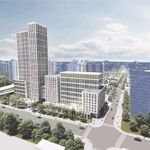kEiThZ
Superstar
I'd think if there were a lot of special conditions in the contract to cancel it, then Bombardier would have had to have revealed that, or else they would be risking penalties for misinforming shareholders.
I never said there was a special clause or that Bombardier would not charge a penalty, just that I am sure Metrolinx has left themselves a big enough space to manoeuvre if necessary and make sure the penalty is not massive.
What? This is the same Bombardier that is currently suing the STM in Montlreal (the Montreal Metro) over plans to cancel and retender their $1.2 billion order for 340 subway cars! Bombardier would quite definitely put up a fight ... unless perhaps it was part of a deal to replace by an equivalent $ order (for subway cars or ALRT cars) - which would then not be tendered, and would risk the kind of lawsuits we've seen in Montreal recently from other vendors when large contracts haven't been tendered.
There's a difference in canning a part of an order (48 LRVs), which could in turn be replaced by an order for more Toronto Rockets or be purchased later as part of more LRT expansion, and outright cancelling and re-bidding an order for 340 subway cars.
Last time I checked, the frontrunner was Ford; and he hasn't got any of these in his plan!
He hasn't announced his transit plan AFAIK, so we don't know what he does or does not have in his plan.




